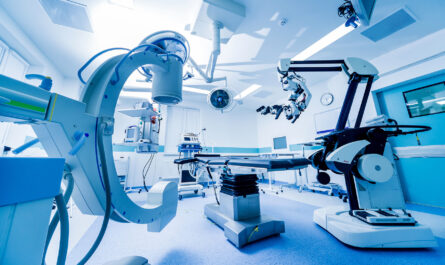
Introduction to Microscopes
Microscopes are scientific instruments used to see objects that are too small to be visible with naked eyes. There are different types of microscopes like optical microscopes, electron microscopes, fluorescence microscopes, etc. used for different purposes. Optical microscopes are the simplest yet most commonly used microscopes that use visible light and a system of lenses to magnify the object.
History and Development
One of the earliest compound microscopes was invented in 1590 by Zacharias Janssen, a spectacle maker from the Netherlands. Galileo Galilei, in around 1610, improved upon Janssen’s design and is credited with being the first to use compound microscope for scientific investigations. Around 1665, Englishman Robert Hooke published his book “Micrographia” which described his observations through microscopes. This propelled interest and further advancements in microscope design and resolutions. Important developments in microscope lenses, object positioning and illumination took place throughout the 18th century by scientists like James Short, Joseph Lister and others. In the late 19th century, developments like oil immersion lenses, fine adjustment knobs and anti-fungus treatments increased the use and lifespan of microscopes.
Components and Mechanism
A basic optical microscope has a light source, specimen stage, objective lenses, eyepieces and a means to adjust focus. White light from the source passes through the specimen on the stage. The light interacts with the specimen and the focused light that carries the image of the specimen is collected by the high powered objective lenses. The magnified but inverted virtual image formed by the objective lenses is enlarged further by the low powered eyepieces and viewed by the observer. The resolution and magnification is controlled by choosing different objective and eyepiece combinations. Fine focusing allows clear viewing of details in different planes of the specimen.
Types
Based on their design and applications, optical microscopes can be classified as – Compound Microscope: Uses multiple lenses to magnify the specimen image. Student/School Microscope: Inexpensive design for basic studies. Stereo Microscope: Gives 3D view for macroscopic objects. Metallurgical Microscope: Used for examining metal surfaces and structures. Fluorescence Microscope: Captures fluorescent emissions from organic dyes or taggants for molecular imaging. Phase Contrast Microscope: Detects fine transparent structures by phase differences.
Applications in Multiple Fields
Biology – Optical microscopes are indispensable for biology studies from cellular to tissue levels. They allow observation of live as well as stained cellular structures, organelles, chromosomes, microbes etc. with minimal damage.
Medicine – Doctors use different types of microscopes in pathology labs to diagnose diseases by examining tissue, fluid or microbiology samples obtained through biopsy or other procedures.
Materials Science – Metallurgists use microscopes to study crystalline structures, defects, phases and other microstructural features that influence material properties. Quality testing of surface coatings also employs microscope analysis.
Microelectronics – Integrated circuits and semiconductor devices are fabricated on extremely small scales of micrometers or less. Optical and electron microscopes help visualize and analyze lithographic patterns, deposited layers, defects etc. during manufacturing process monitoring.
Forensics – Forensic labs employ comparison microscopy to examine fingerprints, fibers, hairs, gunshot residue samples etc. to solve criminal cases by establishing evidence links.
Limitations and Future Prospects
Optical microscopes are limited by the resolution of light itself which restricts the visualization of extremely fine structures smaller than half of the wavelength of visible light used, around 200 nm. Phase contrast, fluorescent and confocal variants partly overcame this but transmission electron microscopes provide far superior resolutions down topicometers. Integration of optical microscopy with other techniques like fluorescence staining, digital cameras and image analysis softwares have greatly enhanced their capabilities. Ongoing research aims to further develop super-resolution optical techniques, integrated micro-nanosystems and lab-on-chip devices incorporating microscopes.
Conclusion
Ever since their discovery, optical microscopes have had a revolutionary impact on fields of biology, medicine and materials science by revealing the fascinating microscopic world hidden from the naked eyes. Continuous improvements have expanded their applications from basic education to cutting edge research. As an affordable and well-established platform, optical microscopy will certainly retain its importance for teaching as well as investigations requiring minimal sample processing and live observations.
*Note:
- Source: Coherent Market Insights, Public sources, Desk research
- We have leveraged AI tools to mine information and compile it


